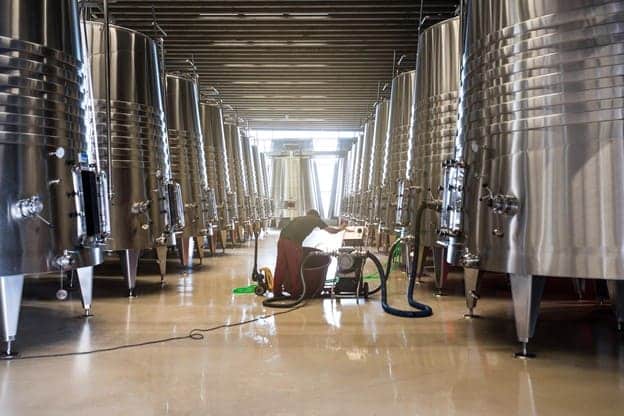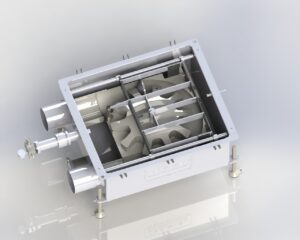What is biomass, and why is it becoming a focal point in the quest for sustainable energy? In a world reliant on nonrenewable resources, the search for alternatives has led us to explore the potential of biomass energy. Let’s dive into the intricacies of this sustainable power source and examine the crucial role of an innovative tubular conveying system in advancing efficient biomass processing.
What Is Biomass?
Biomass is organic matter derived from living or recently living organisms, such as plants and animals. As a renewable energy source, it utilizes the stored solar energy in organic materials. When burned or processed, it releases this energy in various forms, contributing to electricity, heat, biofuels, and more. It’s a key player in the shift toward sustainable energy solutions, offering a carbon-neutral alternative to traditional fossil fuels.
The world we have grown accustomed to is centered around the generation and consumption of energy. Societies worldwide, especially industrialized societies, have incorporated power and fuel consumption into day-to-day life. Most international energy production and consumption in the modern world comes from nonrenewable sources like natural gas, coal, and crude oil – fossil fuels.
These are energy sources that take millions of years to form, and once they are used up, they are not easily replaced. This limited supply of fossil fuel is one of the main reasons many are looking to switch to a renewable energy source. A highly discussed type of renewable energy is biomass energy. Let’s take a closer look at biomass and its potential as a sustainable energy source.
The Solar Energetics of Biomass – A Closer Look at Energy Transformation
The term biomass can be confusing at first glance. It is primarily due to its nuanced difference in meaning across different fields. In ecological terms, it refers to all organic matter types, which encompass all forms of living and recently living plants and animals. When it comes to energy, biomass is reserved for organic matter used as a source of energy. There are many organic materials used in bioenergy, but the majority come from plants or animal sources.
Biomass gets energy directly from the sun, and all organic matter stores solar energy. Plants, which are by far the most excellent source of bioenergy, store energy through photosynthesis. The chlorophyll in plants captures solar energy through chemical processes that convert carbon dioxide from air and water into carbohydrates, hydrogen, oxygen, and complex carbon compounds during photosynthesis. When these newly formed carbohydrates are burnt, they convert back into carbon dioxide and water, releasing the solar energy stored in them.
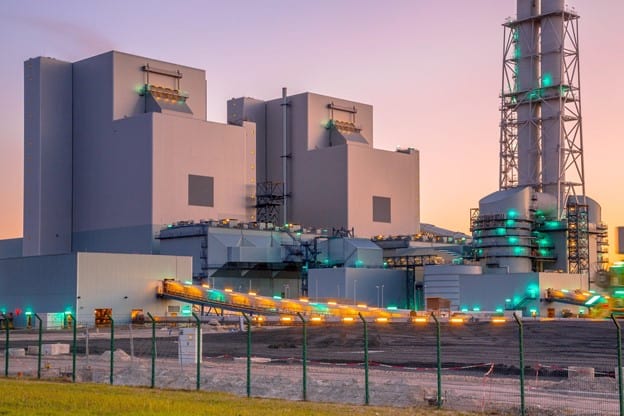
Biomass Feedstock and Its Diverse Sources – A Synergy of Nature, Conveyor Technologies, and Eco-Friendly Practice
When biomass is harvested or recycled as an energy source, it is referred to as a biomass feedstock. Biomass production can come in various types of feedstocks. They can be farmed for energy content, like in energy crops, or recycled from industries with organic waste products, such as agriculture, timber production, or food processing.
Materials from feedstocks are used for power production, fuel, and products that would typically be made from fossil fuels. In this intricate process, conveyor solutions facilitate the efficient movement of biomass materials, while the emphasis on cleaning conveyor belts ensures a seamless and environmentally responsible energy production cycle. There are numerous biomass sources in the world, and they include:
- Wood and Wood Processing
Wood and wood waste are among the most popular biomass sources. They can be used to generate heat and electric power. Examples of wood and wood as biomass sources include firewood (logs, branches), wood pellets, wood chips, furniture and lumber mill waste, and black liquor from paper mills.
- Agricultural Crops and Farm Residues
Biomass can be cultivated and farmed. Not only can entire land sections be dedicated to the growth of biomass crops, but many agricultural waste products like crop and food processing residues can be processed into energy. Examples of crops used as biomass include soybeans, corn, switchgrass, sugarcane, algae, and woody plants.
- Biogenic Materials in Municipal Solid Waste (MSW)
MSW, or as it is more often called garbage or trash, has a lot of biomass potential. It can be used to produce energy in waste-to-energy power plants and at landfills across the country. Examples of garbage used as biomass include cotton, paper, wool products, yard, wood, and food waste.
However, it is essential to note that not all garbage used in energy generation comes from biomass. Certain waste-to-energy plants burn plastics as well. These are hybrid energy sources that generate power with a mix of biomass and plastic waste.
- Animal Manure and Human Sewage
The energy of these organic materials can be released in multiple ways. While the most popular method of using biomass for energy is burning, you can also convert it into biogas. This is a natural gas created from rotting organic materials. When biogas is captured in a closed container, it can create fires or generate electricity. The most common organic materials used to produce biogas are human, plant, food, and animal waste.
How Biomass Is Utilized in Various Bioenergy Technologies?
Bioenergy, covering all electricity and gas derived from biomass materials, stands as a versatile and responsive energy source capable of meeting dynamic consumption demands. Positioned as a reliable alternative and backup to weather-dependent renewables such as solar panels and wind energy, bioenergy is central to the evolving landscape of sustainable power.
Exploring the transformation of biomass’s abundant feedstocks, this process is finely orchestrated within biorefineries. Here, the efficiency of this transformation is facilitated by a cutting-edge conveyor belt system, contributing to the seamless integration of organic materials. Acknowledging the pivotal role of conveyor systems manufacturers in this scenario underscores their commitment to shaping a greener and more sustainable energy future.
Biopower – Empowering the Green Tomorrow
Biopower tech transforms biomass into electricity and heat through processes similar to those used in fossil fuels. The three main ways of generating power from organic matter include bacterial delay, burning, and converting to liquid or gas fuel.
Biofuels – Enter the Nurturing Sustainable Journeys
Biofuels are fuels derived from organic materials and are used all around the world. The industry is massively expanding in Asia, Europe, and North and South America. They aim to help meet transportation needs in a world with depleting fossil fuels (petrol and diesel fuel).
Biofuel can come in the form of ethanol and biodiesel. They are made from plant (soybean, rapeseed, sunflower, palm oil, coconut, hemp, etc.) and animal (tallow, lard, yellow grease, chicken fat, etc.) biomaterials.
In this transformative journey, the importance of conveyor installation supervision emerges, ensuring the seamless integration of biofuel production processes and reinforcing the commitment to sustainable energy practices worldwide.
Bioproducts – Converting Biomass Into a Sustainable Future
Beyond the realm of generating electricity and fuels, organic materials undergo a transformative journey, evolving into essential chemicals used in the production of various products. This includes plastics – a departure from conventional petroleum-based manufacturing. While not every petroleum product finds a direct substitute, biomass offers a green alternative for the majority.
In this eco-conscious paradigm, conveyor manufacturing plays a crucial role in facilitating the efficient and sustainable movement of organic materials. This integration underscores the commitment to responsible manufacturing practices, marking a significant step towards a cleaner and greener future.
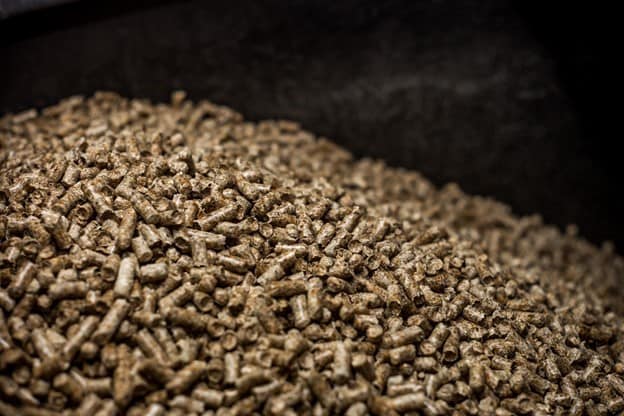
The Process of Converting Biomass Into Energy
Biomass energy conversion can be done through several different processes. These processes include:
- Direct Combustion
Direct combustion is the oldest and most common method of transforming biomass into energy. All organic forms can be directly burnt to generate heat for buildings and water, industrial heat processes, and generate electricity in steam turbines.
- Thermal Conversion (Thermochemical Conversion)
Thermal conversions include processes that utilize heat to transform biomass into better and more valuable fuel sources. Many thermal conversions exist, but the most basic ones are torrefaction, pyrolysis, and gasification. The main difference between these conversions is the chemical reactions that occur during exposure to different degrees of heat and controlled exposure to oxygen levels.
- Chemical Conversion
Organic matter can be converted into several useful chemicals. This is done through a range of chemical processes that can convert biomass into fuel that is more practical for storage, transportation, or use.
- Biological (Biochemical) Conversion
Given that biomass is an organic natural material, many natural processes can break down its molecules. Throughout the history of its utilization, people could harness many of these biochemical processes to perform the conversion process. These processes include:
In this intricate web of biomass energy conversion, the efficiency and reliability of the process are elevated by the incorporation of innovative manufacturing conveyor systems. This means you should choose an automatic conveyor system rather than a belt conveyor system. These integral components ensure the seamless movement of organic materials, contributing to the sustainability and effectiveness of the overall energy production cycle.
Explore Some of the Most Important Benefits of Biomass Energy
The increasing popularity of renewable energy sources, like biomass, has become the norm in many countries. These are some of the reasons why many are starting to focus on biomass.
- Readily available – It can be found in numerous forms all around the world. This makes it a readily available fuel source that can easily be used for practical purposes.
- Reduces fossil fuel reliance – Global warming and climate change are important factors to consider when looking at renewable energy sources. Diverging from nonrenewable sources like crude oil and coal, known for their dual impact on climate change and human health risks, biomass presents itself as a sustainable and eco-friendly alternative. This alternative energy source proves to be less harmful to both our well-being and the environment.
- Less greenhouse gas emissions – Greenhouse gases released into the atmosphere from fossil fuels can cause a lot of damage because of fewer carbon emissions. Greener alternatives utilize plant growth (their carbon capture capabilities) for the benefit of society. Biomass emissions are more carbon neutral as they release carbon dioxide (CO2) that has been absorbed by the plant during its growth and development. The cycle of absorbing carbon and releasing it is a lot better for the planet.
- Cost-effective energy transition – Extracting fossil fuels demands substantial capital and investment, encompassing expenses for oil drills, gas pipelines, and fuel collection systems. In contrast, biomass technology with industrial conveyor systems presents a more economical solution. While some of its energy implementations may have a relatively high initial capital requirement, they pale in comparison to the extensive costs associated with fossil fuel extraction.
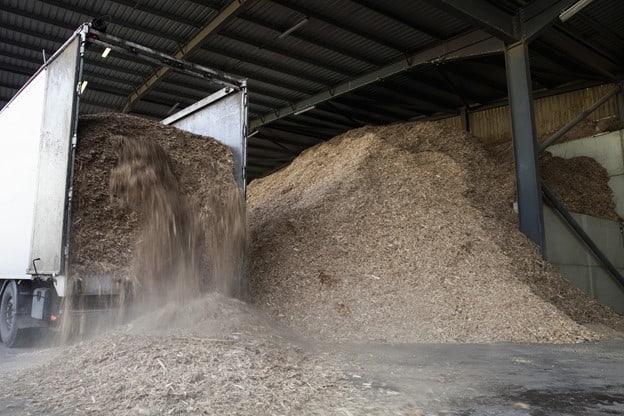
Paving the Way to Sustainable Energy With Biomass and Cutting-Edge Automated Conveyor Systems
The world is quickly changing to accommodate more sustainable energy. Countries all around the world are looking to go green and help the planet. Biorefineries and businesses that embrace renewable energy need to have the proper technology to safely, efficiently, and consistently process biomass in numerous forms (flake, powder, or wet). Cablevey Conveyors tubular cable and disc conveyors can handle various sizes, weights, and combinations of biomass materials. Our systems are designed to meet the needs of every modern biorefinery and processing facility. Contact us today and join us in shaping a more sustainable tomorrow.

